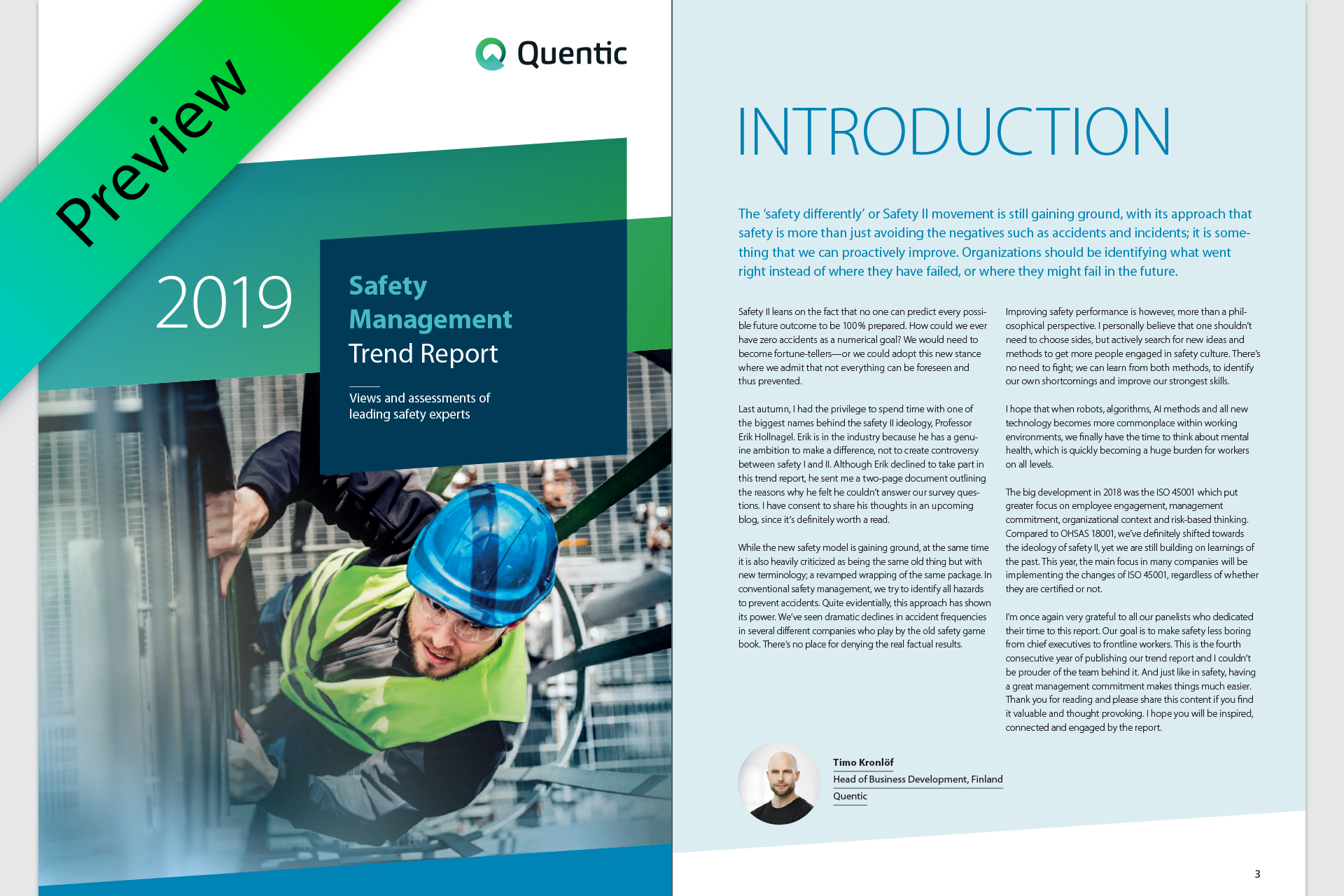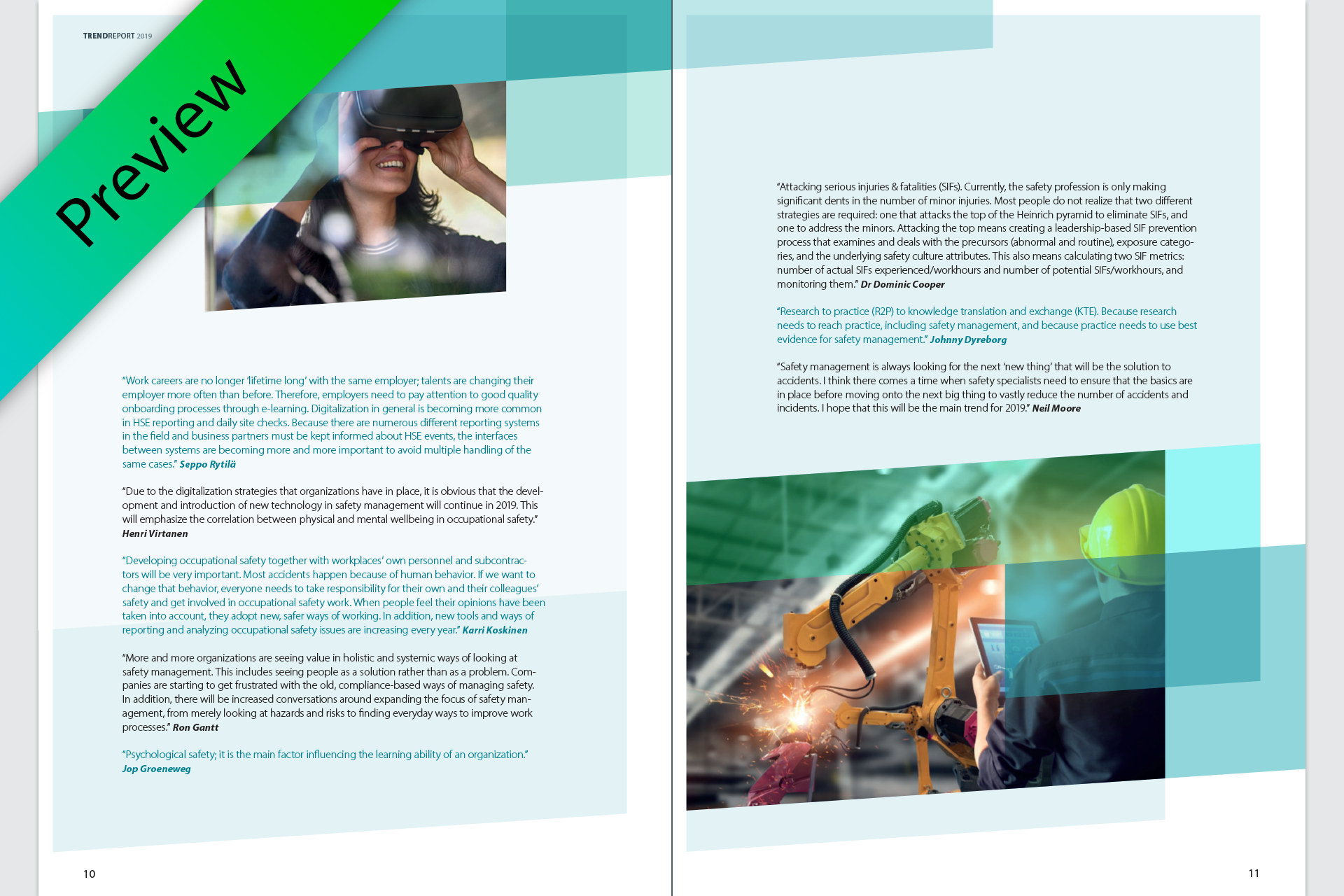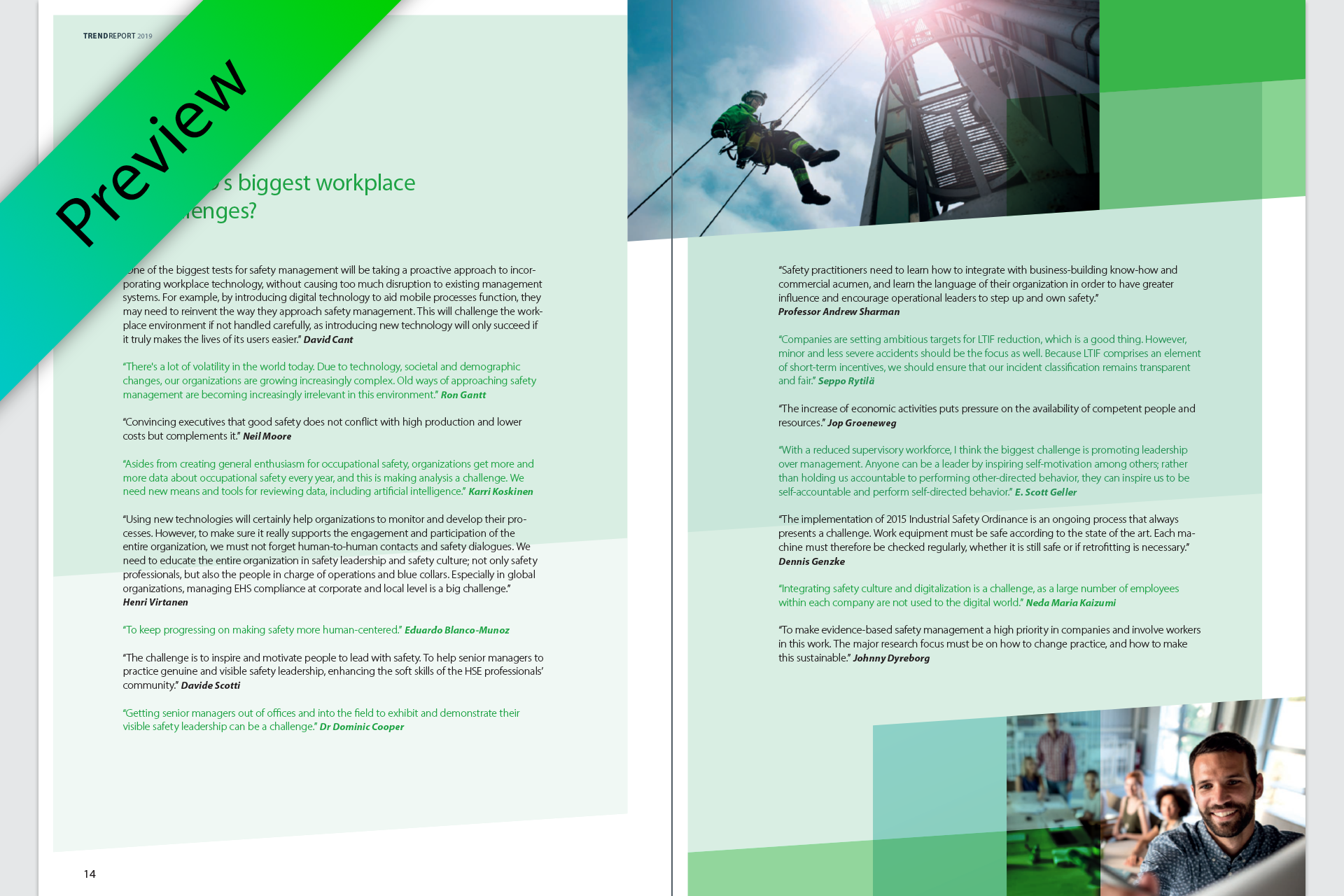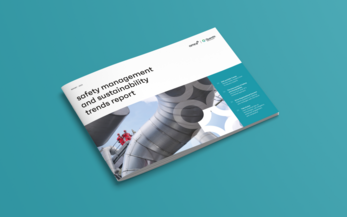The world of work is changing. Industry 4.0 is bringing people and technology closer together than ever before. Work is becoming more global, more flexible, and more automated. But is it also safer?
When it comes to digitization, the importance of occupational safety is still underemphasized. But new technologies are only one means of promoting workplace safety. Real leadership is required! In order to establish a goal-oriented safety culture, leaders need to make sure their employees are involved and inspired in the long term.
The majority of the experts surveyed agree: there is a gradual shift away from established top-down approaches to newer ones. But are "Safety II" or "Safety Differently" merely old wine in new bottles? Should skilled workers question zero accidents as a numerical target? Accident frequency rates have fallen significantly in recent years. It would be foolish to deny the success of proven approaches.
Read the fourth edition of the Safety Management Trend Report—and see for yourself. The report provides you with assessments from leading experts, who evaluate different trends: from ISO 45001 to intelligent Personal Protective Equipment (PPE) and EHS reporting to topics such as Artificial Intelligence.













